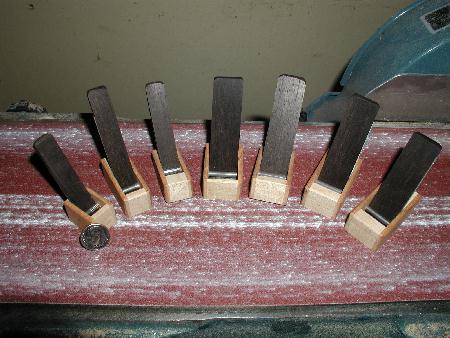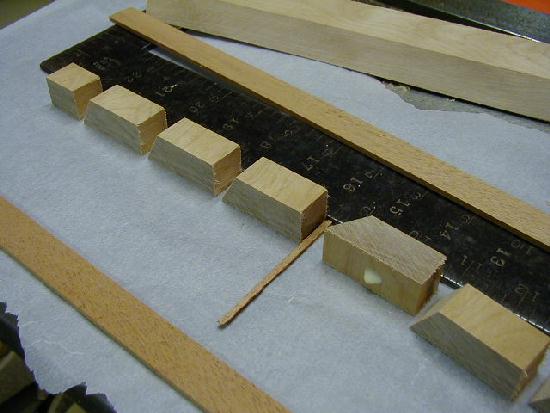
This method of making planes is not original with me. I got it from Mario Proulx and I have since seen it in some early books too. So the design explained here is not copyrighted by me, just this particular paper and presentation. Feel free to share it but include this credit information.
How about a train of planes? I made a slight modification on Mario's great
method with mass assembly in mind. I took a piece of maple that is 3/4" thick
and about 2" wide and angle cut one edge to 60 degrees on the table saw. I then
chunked off 3/4" pieces of this and laid them in a row. I took one piece and
cut it in half to make a 3/4" block and put that down first, then the full sized
pieces, then the little angle piece last. In this image you can see I am gluing
them down onto a scrap piece of paper with a dot of glue, using the framing
square to get them in a line, and using a small scrap of wood to position for
the throat gap. You can see the large angle-cut chunk in the background and
the mahogany side strips also laid out. You can make blocks with different angles
to get different cutting effects for the planes from scraper plane to low-angle.

Notice that in this photo the back side of each block is just flat. In later designs I found that I can precut it at an angle too to provide the chip relief so I don't have to carve it in later. [See design modification near the end.]
Next I glue on the mahogany side pieces with a zillion spring clamps. Since
the pieces are glued to the paper, I just tilted the whole group over on the
side, applied glue to the blocks, then the side piece. Flip over on the other
edge and repeat. This avoids smearing glue in the side pieces and ending up
with a bunch of goober showing in the center area.
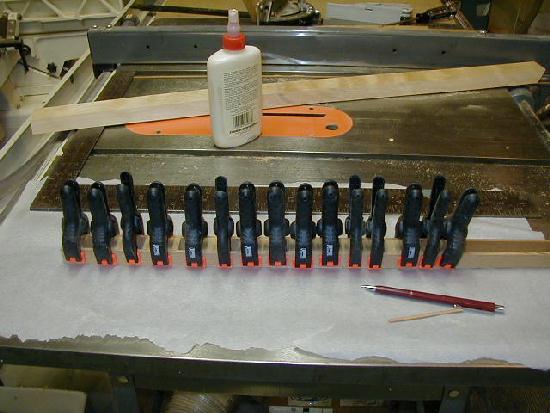
Once the strip of planes was dry, I leveled the top and bottom on the belt sander. Then I marked off cut lines to make different length planes and whacked them off on the bandsaw.
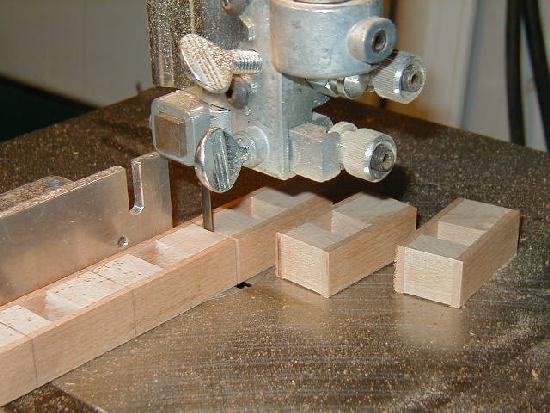
Here is my fleet of roughed out micro planes.
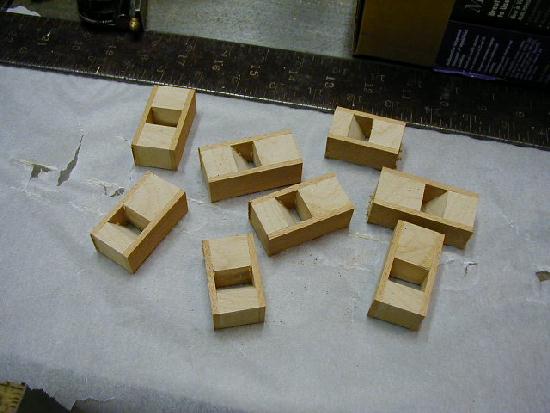
Now you need to smooth the edges a bit. You can grind the bottoms at different angles to get different cutting effects. Make a couple that have a convex lower surface for carving in the recurve areas of the plates if you are making them for mandolin or archtop guitar carving. You can also grind off part of the sole to change the plane angle in a minor way w/o having to make a new center profile piece.
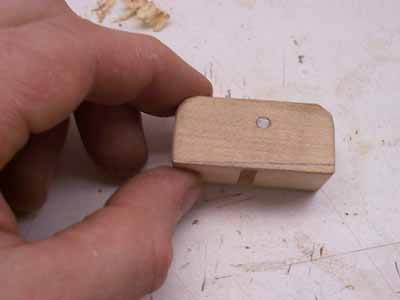 |
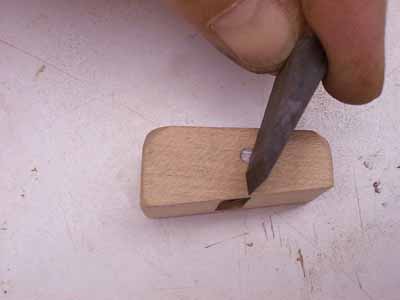 |
Cross drill just above the angled surface for a cross pin. First select something like an 8 penny nail ant then pick a drill bit that makes a snug hole for the nail. Drill across and insert pieces of nail and wick in some super glue to hold it in place. Smooth off on a belt sander or by hand with a file. The exact location of the cross pin you will have to determine by the size of your pin and wedge that you make.
Select some ebony or other hard wood and make wedges that fit in under the
nail. Fit in a plane iron cut from a Sandvick scraper and fit the wedge so that
it holds the blade tight. I just blast the wedge on the belt sander till I've
got it right and then shorten up the lower end to provide relief. Assemble the
whole thing with the plane iron extended a bit. Now grind it down on the belt
sander till it is flush with the bottom of the plane. This is especially important
for the convex-bottom planes. Pull the iron and do the final grinding and sharpening
now that you have the angle set.
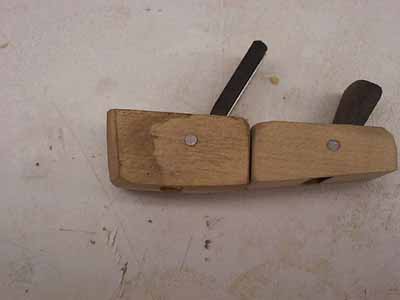
Here is a profile of my final design that included the chip relief slot. I have deliberately not included dimensions since there aren't any "right" measurements, just make what size you need for your specific project.
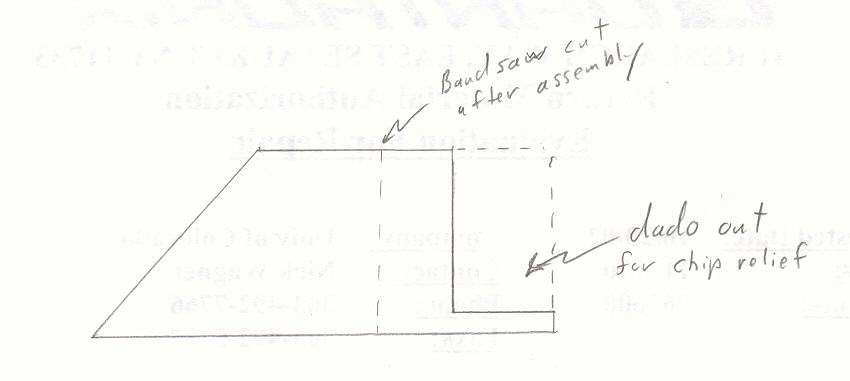
News Flash!!
Dateline - Colorado
Local Luthier Loses Control, Run Amok.
Reported yesterday, local mild mannered luthier Alan Dunwell seemed
to lose control while building some finger planes. It started late in the
day as he was building one plane for
making mandolins, but this innocent activity quickly went awry and
got out of control.
"I just couldn't seem to stop myself." he said when interviewed this
morning, "First I made one, then I made another, and another....<sobs>...Really,
I just didn't know what I was
doing."
Sounds like an innocent case of planoacretion syndrome but this has
happened before.
"He just disappears into the shop and won't come out." his wife said.
Sometimes I just have to put a bag over his head to quiet him down, kind
of like the parakeet, then I can
lead him to food and get him to go to sleep."
Further details are not available but it is believed that Alan has checked
into the Betty Ford Center for Toolahaulics, we hope for a quick recovery.
